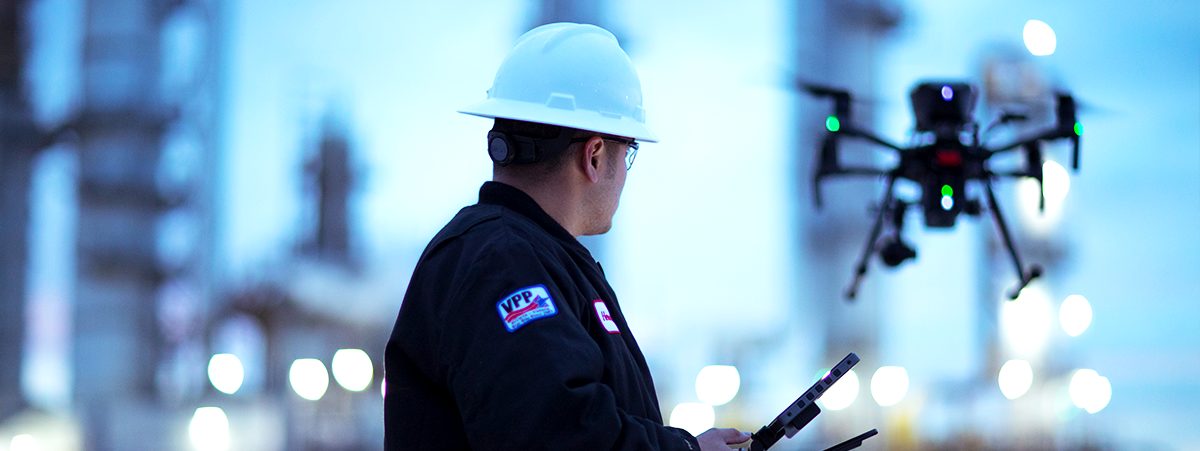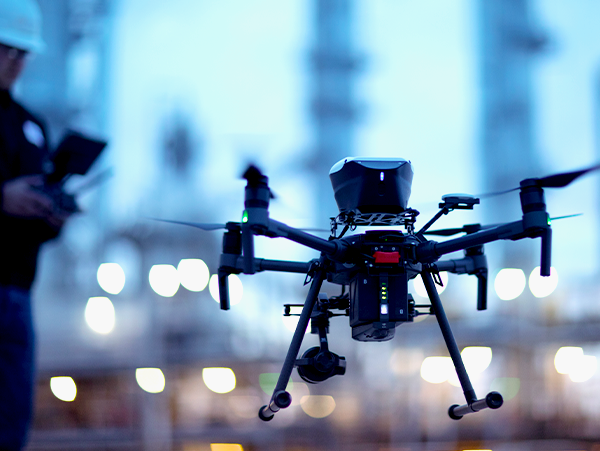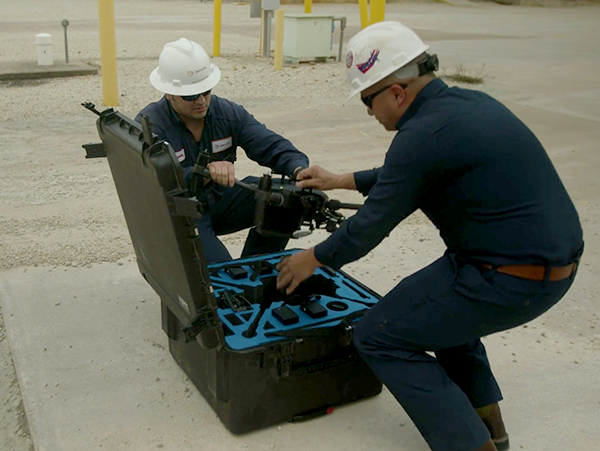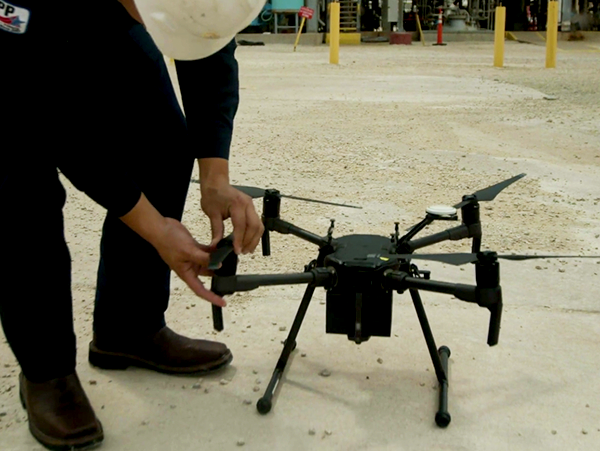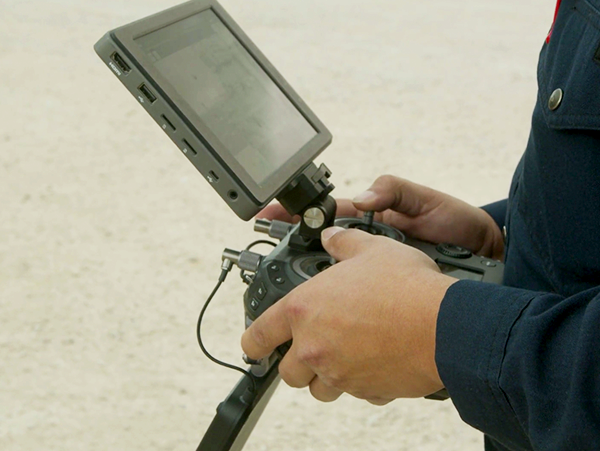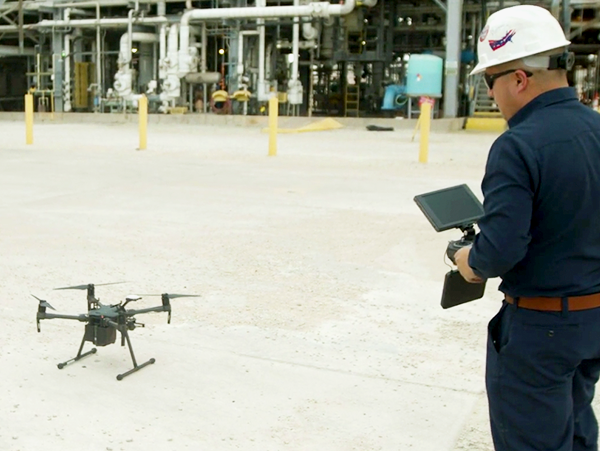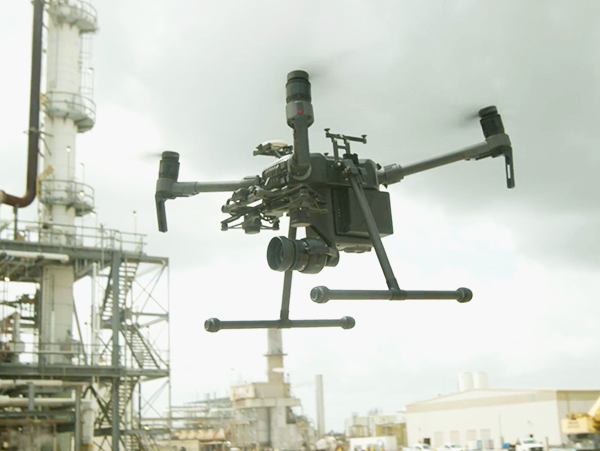Learning To Fly: Inspection Operators Chart New Career Path As Drone Pilots
Learning To Fly: Inspection Operators Chart New Career Path As Drone Pilots
When Marcus Ramirez joined INVISTA Victoria as a fixed equipment inspector 10 years ago, he knew what to expect on the job. Scaling scaffolding to assess equipment high above the ground. Boating across a 130-acre containment basin. Juggling a heavy schedule of inspections. All in a day’s work. But he never expected his resume would one day feature the phrase “FAA-certified drone pilot.”
It’s not that drones were unfamiliar to Marcus. Already four years into his career as an inspector when he joined INVISTA, the Victoria, Texas, native had seen a few buzzing around industrial sites — and they’d naturally caught his attention. Growing up, Marcus had always been the kid who was interested in technology and machines. He loved to take things apart. “I wanted to see how they worked or make them better,” he says. Marcus brought that same mentality to his career and work, always looking for ways to improve the inspection program. For the most part, however, he performed his job the traditional way, conducting the majority of his inspections visually, often getting off the ground or into large containers to check whether the structures were sound.
But after watching a contractor fly a drone to inspect a flare, Marcus and fellow inspector Matt Hernandez began talking about making a change. “We started joking that we could probably do this ourselves," Marcus says. The idea took root. Not long after that, the pair successfully pitched a drone inspection program that has enhanced their ability to identify potential issues before they become problems. And for Marcus, the program has changed his career in ways he’d never dreamed.
“Technology is the way of the future,” says Marcus. “We have to embrace it and find what helps us the most.” At INVISTA Victoria, inspectors now regularly use drones to help examine the exteriors and interiors of hundreds of tanks and towers at the facility, which manufactures nylon intermediates.
But first, the team had to learn how to get those drones off the ground. After he and Matt pitched the drone concept to supervisor Danny Ballard, the pair attended an out-of-state 40-hour, FAA-certified drone pilot training. They learned how to inspect the drones before liftoff, run through pre-flight checklists, install software updates and, of course, fly the machines. It’s the same training that pilots receive, but without the flight time.
"There's a learning curve, and at first, I don’t think we knew what we were getting into,” Marcus recalls. “But these things are like Cadillacs, and once you do start you start flying them, it’s easy.”
While becoming drone pilots hasn't changed the inspectors' roles in Victoria, the technology has dramatically altered how they do their work at the plant. For example, previous inspections often required building massive scaffolding that Matt or Marcus would climb up to examine a tower or tank wall. Sometimes they’d even need to get into containment vessels for inspections. Now they can fly drones to places they previously had to reach themselves, including inside of storage structures — a feat of drone operation that requires significant finesse.
In another instance, the facility used to send two inspectors out in a boat to canvass its 130-acre containment basin. They'd shut down the spray coolers, and another person would monitor the process from the bank. Planning and completing the basin inspection took a minimum of a few days. Today, the team can fly a drone over the water and inspect the entire basin in 45 minutes.
Victoria site manager, Vince Salvador, added, “We are just at the beginning of exploring and experimenting with how drones can transform how work is done at the site, and I’ve been impressed by how they have already made a positive impact on our inspections and increased uptime at the site. This technology is proving useful for everything from inspection of high-voltage lines, flares and overhead piping to surveying progress during our wetland renovation project.”
For Matt, learning to fly the drones changed how he views his work. He’s always thinking about different ways to use the technology and what more they can get out of the drones. “If one of our technicians comes in and says that they don’t have access to something, the next question is, ‘Can we do anything with the drones that will get us the inspections that we need?’ ” Matt says. And both men agreed that while they’d never anticipated working with drones in their field, following their curiosity has paid off in big ways.
“Don’t hesitate to learn (new technology) even if you’re uncomfortable, because in this day and age, that’s what everything is going to,” Matt says. “New technology is the future for all generations, and it’s going to become bigger and better than what it is now.

